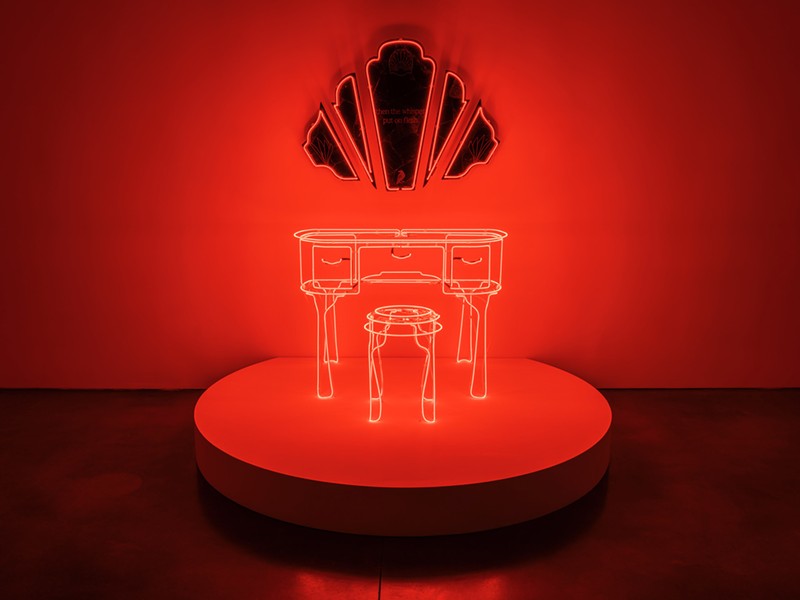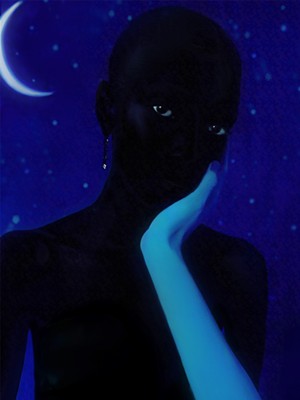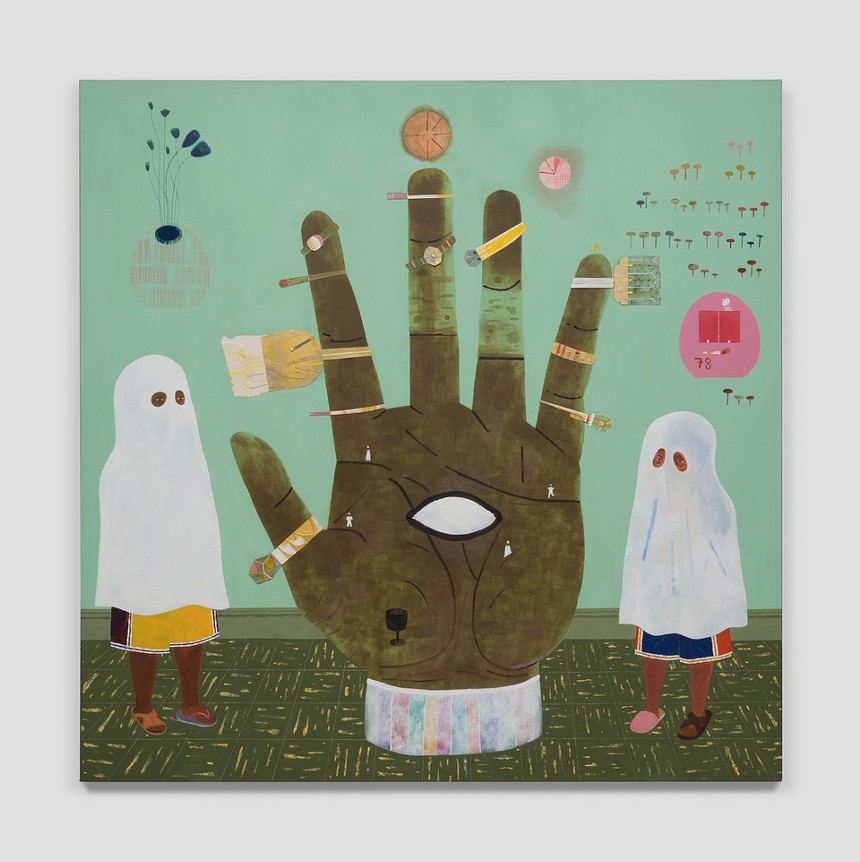Believe it or not, the Modern Art Museum of Fort Worth's current exhibition, Surrealism and Us: Caribbean and African Diasporic Artists since 1940, wasn't initially planned to coincide with this anniversary. A longtime passion project of Modern curator Maria Olena Ortiz, the show has been in the works since 2017, when Ortiz worked at the Perez Art Museum Miami.
"At my previous institution, I was actually on the research track," says Ortiz. "I was in Dusseldorf doing research, and I stumbled upon a show on Surrealism in Egypt, a different collection, and I thought, 'I could totally do a show on this similar topic related to the Caribbean diaspora.' In retrospect, I feel like it has always been in the ether. Where I grew up in Puerto Rico, we never had a lot of traditional art objects in my house, but we did have a Dali print that was the portrait of Abraham Lincoln. So now I find it kind of ironic. Once I started going deep in the research, it was really obvious there was this whole history I didn't know about because I wasn't taught it in college or graduate school."
Starting the project with "a gigantic checklist," Ortiz thought she could finally turn her research into what became Surrealism and Us with the simple question, "What if surrealism first emerged in the Caribbean?"
"If we start thinking that way, we can understand the movement's history more generously," Ortiz says. "[Surrealism] started to combat fascism, and we're now in a moment related to that politically. It was really this strategy initiated by [French poet] André Breton to propose a new world in which you're honing your subconscious and spirituality in ways where you're not rational because if you're here for pure reason, you end up in war.
"If we think about the relationship with struggles for freedom or liberation and we talk about the colonial pressures they were enduring in the Caribbean, they were also figuring out strategies of their own that can be similar to strategies we know as surrealistic."
Indeed, Breton proposed Surrealism as a reaction to the destruction of the Great War. His Surrealist Manifesto posits that humanity could never again be ruled by rationality — the only intelligent way for our species to thrive remained only in a dreamlike state. When Breton moved to the island of Martinique while fleeing the Nazis, he realized he had much in common with his new friends, writer Suzanne Césaire and her husband Aimé, co-founders of the Negritude art movement. In fact, the show draws its name from a 1943 essay by Césaire that outlines the reach of Surrealism 20 years after Breton first proposed his manifesto.
"Surrealism allowed them to see themselves within the Western art narrative," says Ortiz. "And Breton saw all these artists and people as equals. He started a market for artists that were not considered artists."
Surrealism made just as much sense to the Black diaspora as it did to the Western European radicals of the early 20th century. Spanning more than 80 years of work in its scope, Surrealism and Us focuses on Afrosurrealism and Afrofuturism, with a healthy dose of magical realism and a nod to African diaspora religions, including voudou.
While Ortiz has leaned into sharing stories that might be obscure to the average museumgoer, she also wanted to highlight the richness of subject matter and materiality. Told thematically rather than chronologically, the show is divided into three sections: "To Dare" (exploring the creative conversations of the region in 1940), "Invisibility" (the links between Afrosurrealism and contemporary art) and "Super/Reality" (how African diasporic religions challenge Imperial reason).
Surrealistically Yours, Mine and Ours
The viewer can dig deep into these themes or let the colorful, vibrant works wash over them with a delightful mix of materials and subject matter that explores enchanting dream states. Ortiz isn't concerned exactly how you absorb the story she's telling — there's an entry point for every viewer of any age."When I decided to create this conceptual framework, I set boundaries for myself that would help me start," Ortiz says. "I felt these three ideas would be a good entry point for people familiar with the history and the instability [of the movement]. But, as a curator, I like color. These works are beautiful. If you dig deep, they may come from an intense history, but I hope you'll think of happiness and be welcomed first with beauty. That was a personal choice."
To further engage visitors, the museum offered a free symposium related to the show on May 18. The event included site-specific spiritual dance works, artist conversations, prayers, poems and storytelling.
The concept of a show focusing on African and Caribbean Surrealism feels more apt than ever in 2024. During a time when front-page headlines might be as easily drawn from The Onion as from The New York Times, it might seem as though we're all living in a season of Black Mirror. So why not immerse oneself in poetry, paintings and sculptures that seemingly unveil a different side of what life could be?
"Surrealism is this strategy to look for different ways of being and create a different world for yourself when you're feeling oppressed," says Ortiz. "As long as we're oppressed, as long as there is something we feel we need to improve, Surrealism is always going to be a strategy."
Surrealism and Us: Caribbean and African Diasporic Artists Since 1940 is on view through July 28 at the Modern Art Museum of Fort Worth, 3200 Darnell St.














